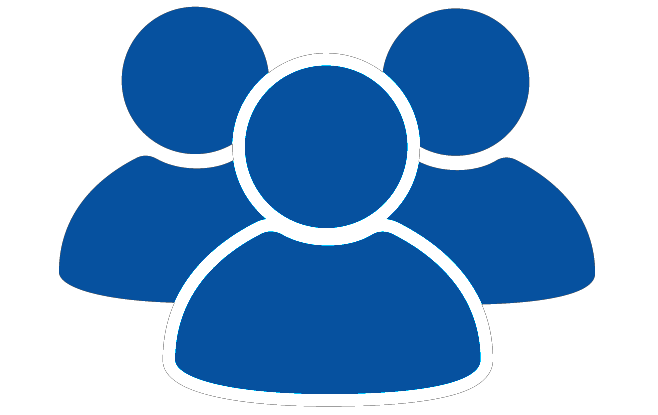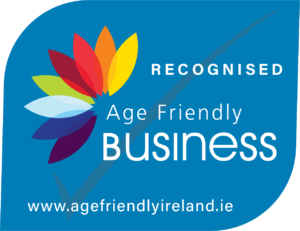If you are in debt and cannot meet your repayments in full as they fall due, formal debt solutions can be an option. There are solutions under the Personal Insolvency Act 2012 to help you clear your debt problems over a period of time. Different debt solutions can affect your life in different ways (for example, they might affect your credit rating, mortgage or savings).
You must apply for a Personal Insolvency Arrangement through a Personal Insolvency Practitioner (PIP). They will charge a fee but if you contact MABS, they can arrange a free consultation through Abhaile. So it’s always a good idea to contact MABS before you make any big decisions.
What is a Personal Insolvency Arrangement?
A Personal Insolvency Arrangement (PIA) may suit you if:
- You have a mortgage
- You are insolvent but can afford to make some repayments towards your debts after you have paid your necessary household expenses.
Under a PIA, you make a formal agreement with all your creditors that will write off (cancel) some of your unsecured debt and restructure any remaining secured debt.
A key feature of a PIA is that, in many cases, you can stay in your home and it won’t be repossessed. The creditors included in the PIA can no longer contact you asking you to repay debts that are included in your PIA.
A PIA will usually last for up to 5 years (can be extended to 6 years in some cases). This is called the ‘supervision period’. The length of an arrangement is agreed by all parties involved. It will depend on your personal circumstances and what is being proposed by your Personal Insolvency Practitioner.
The PIA proposal must be agreed by you and then approved at a creditors’ meeting. Your proposal can be imposed on your creditors after a court review.
When a PIA is in place, you are entitled to a reasonable standard of living that includes food, clothing, education, health care, a modest allowance for savings and special circumstances. Work out your household’s reasonable living expenses using the ISI’s reasonable living expenses calculator.
At the end of the supervision period, if you keep to the terms of the PIA, the rest of your debts to unsecured creditors listed in your PIA will be written off. This means that you no longer owe the money. However, when the PIA ends, you will still have to pay outstanding amounts on your secured debts, such as your mortgage.
What happens if my circumstances change?
Your Personal Insolvency Practitioner (PIP) can change your PIA if your circumstances change during the term of your agreement.
Your financial situation gets worse: If you can no longer afford the agreed repayments your PIP can apply for a change to the arrangement terms.
Your financial situation improves: The terms of the PIA can be changed if your circumstances improve.
You will have a say in any changes made to the arrangement.
Is there a fee for getting a Personal Insolvency Arrangement?
You must apply through a Personal Insolvency Practitioner (PIP). This is a person authorised by the ISI to support you to apply for a Personal Insolvency Arrangement. A PIP will charge a fee for this service. There is no set fee for PIPs, but they are expected to clearly tell you their costs and charges before you appoint them.
Under Abhaile, MABS can give you a voucher for free advice and help from a PIP. The voucher covers a consultation with a PIP.
What debt does a Personal Insolvency Arrangement cover?
A Personal Insolvency Arrangement (PIA) process gives debt relief if you have secured debt and or unsecured debt that you can’t repay.
Secured debt means debt backed by an asset such as a mortgage. Unsecured debt includes debts on credit cards, loans and overdrafts.
May be included
- Principal private residence housing loans (your home mortgage)
- Investment property loans
- Buy–to–let mortgages/loans
- Personal guarantees
- Personal loans
- Credit Union loans
- Business/commercial loans
- Credit card loans
May be included with creditor permission (Excludable)
If the creditor is contacted and asked if the debt can be included and doesn’t respond, the creditor is judged to have permitted to it being included.
- Taxes, duties, levies owed or payable to the State
- Local government charges
- Amounts due to the Health Service Executive under the Nursing Home Support Scheme
- Annual service charges to owner’s management companies (apartments and housing estates)
- Liabilities arising under the Social Welfare Consolidation Act 2005
- Local authority rates
- Household charges
May not be included (Excluded)
- Family maintenance payments under Court orders
- Court fines in respect of criminal offences
- Liabilities arising out of personal injury or wrongful death claims awarded by the Court
- Liabilities arising from loans obtained by fraud
- Other similar debts
Am I eligible for a Personal Insolvency Arrangement?
To qualify for a PIA, you must:
- Be insolvent (unable to pay your debts when they fall due)
- Be unlikely to become solvent within the next 5 years
- Have secured debts of €3 million or less (unless your creditors agree to more). There is no minimum or maximum limit on unsecured debts
- Owe debt to at least one secured creditor holding security over Irish property or assets
- Have no more than 25% of your debts built up in the last 6 months
- Not had a PIA before (you can only have one PIA in your lifetime)
- Not had a protective certificate issued for a PIA in the past year
- Not had a Debt Relief Notice in the last 3 years
- Not had a Debt Settlement Arrangement in the last 5 years
- Not been involved in bankruptcy in the past 5 years
You must have been through a mortgage arrears process
You must also have co-operated under a mortgage arrears process for a period of 6 months with your secured creditor for your home. You must not have agreed to an alternative repayment arrangement with your creditor.
How do I apply for a Personal Insolvency Arrangement?
You must apply for a PIA through a Personal Insolvency Practitioner (PIP).
Call the MABS Helpline on 0818 07 2000, Monday to Friday from 9am to 8pm, to check if you are eligible for help and advice under the Abhaile scheme.
You will have to complete a Prescribed Financial Statement (PFS), giving full and honest information about your financial circumstances.
What are the stages of a Personal Insolvency Arrangement?
Below is a summary of the stages involved.
| Stage | What happens |
| 1. Check if you’re eligible | MABS can help check your eligibility to apply for a PIA and check if you are eligible for help and advice under Abhaile. Call the MABS Helpline on 0818 07 2000, Monday to Friday from 9am to 8pm. |
| 2. Choose a PIP | Choose a PIP from the Register of Personal Insolvency Practitioners published by the ISI or call the ISI’s information line 01 764 4200, Monday to Friday from 9am to 6pm. If you qualify for a voucher for free advice under the Abhaile, you can choose from the panel of PIPs set up under Abhaile. |
| 3. Before your PIP consultation | Gather details of your debts, so you can bring these to your PIP consultation. |
| 4. PIP consultation | You will meet with the PIP. Your PIP will: Explain the process and help you complete a Prescribed Financial Statement . Tell you if a PIA is the right solution for your situation, what the consequences will be and what fees you will have to pay. You will: Sign a declaration that you haven’t been able to agree an alternative repayment arrangement with your creditors. |
| 5. Appoint the PIP to act on your behalf | You will: Decide whether you are happy with the solution being put forward and want to proceed with an application. Appoint the PIP. The PIP will write to you to confirm that they will act for you. |
| 6. PIP applies for Protective Certificate | Your PIP sends your application to the ISI. ISI checks that all the details are in order and sends a protective certificate together with all the documents to the relevant court (the Circuit Court in cases up to €2.5 million and the High Court in larger cases). Court reviews the documentation and issues a protective certificate. ISI records the details of the protective certificate on its Register of Protective Certificates. |
| 7. PIP notifies creditors | Your PIP tells each of your creditors the protective certificate is in place and that you intend to make a proposal for a PIA. The protective certificate will give you 70 days during which your creditors may not take action against you in respect of the debt. The court can extend the period of the protective certificate by a further 40 days in certain cases. |
| 8. The PIA proposal | Your PIP must invite the relevant creditors to make proposals about the way the debts might be dealt with as part of a PIA. Your PIP must give creditors your Prescribed Financial Statement. When creating the proposal for a PIA, the PIP will make sure that you are not required to sell or move out of your home (where this is possible). |
| 9. Meeting of creditors | The PIP calls a creditors’ meeting. The creditors vote on whether or not to accept the proposed arrangement. Each vote is proportional to the amount of debt owed to that creditor. For the PIA to be accepted:
Creditors accept: PIP tells the ISI who notifies the court. |
| 10. Court approves the PIA | If the court is satisfied that all the conditions have been met, it approves the PIA and it comes into effect. The ISI records the PIA in its Register of Personal Insolvency Arrangements. If the court does not approve the PIA, you may have to look at another personal insolvency option. |
| 11. What next? | You and your PIP will review your PIA at least once a year – see ‘what happens if my circumstances change’ above. While the PIA is in place, you can’t get credit for over €650 without telling the lender you have a PIA. |
You can read more in the Insolvency Service of Ireland’s Guide to a personal insolvency arrangement (pdf) and information on what a PIP can do for you (pdf)
What are my other options?
A PIA may not suit everyone. If a PIA is not for you, you have other options. Talk to MABS if you need any more information.
Creditors often prefer to come to an arrangement with you to repay debt, without taking legal action and going to Court.
If you have unsecured debts of less than €35,000 and are on a low income and have minimal assets, a DRN might be more suitable option for a fresh start. A DRN will not be suitable if you have a mortgage. Debts are written off after 3 years of supervision and no payments are required unless your circumstances increase above a set amount during the supervision time.
Debt Settlement Arrangement (DSA)
There are no minimum or maximum limits on your debts, assets or income but all of your debts must be unsecured. A DSA will not be suitable if you have a mortgage.
Bankruptcy is your option of last resort. You must first have tried a DSA or a PIA and you must have more than €20,000 of debt. If you use a PIP under the Abhaile, they may advise that your best option is bankruptcy. They will also give you the certificate required by the bankruptcy court, confirming that you have been advised regarding your options under personal insolvency.




Facebook
twitter
Instagram